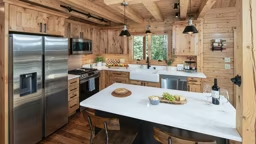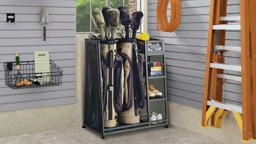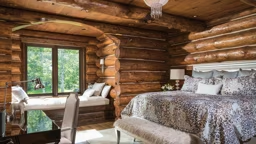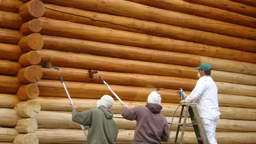
First, a note on terminology: landscaping or “softscaping” means adding natural elements to your property like plants, trees, flowers and shrubs. By contrast, “hardscaping” is bringing manmade materials, such as concrete pavers, brick, gravel, fountains and wooden beams or planks, into the mix.
Although the words have very different meanings, the blend of the two “scapes” can be gorgeous. Think about walking down a gravel path that wends its way through a flower bed, for example, or rough-hewn steps of wood or stone flanked by colorful shrubs and trees. Some of the most beautiful landscapes — like the grounds at an arbore- tum or public garden — artfully mix natural and manmade elements to create a sense of tranquil harmony. Best of all, you can achieve the same effect at home. Here are some tips to skillfully integrate hardscape features:
Choose a theme
There are so many hardscaping choices that it’s easy to feel overwhelmed, and to go overboard with them throughout your property. To prevent a hodgepodge effect, pick a theme that relies on specific hardscape options. For instance, a “rustic farm” look would feature weathered wood, rough stone fire pits and metal with an aged patina. By contrast, a formal English-garden design would rely on gravel paths, stone walls and wooden trellises.
Find focal points
Use garden ornaments, like an arbor or a piece of art, at strategic spots in your landscape to draw the eye to a particular location. It creates a sense of order and purpose to your yard.
Be curvy
There are few straight lines in nature. To make hardscaping fit into a landscape more effectively, follow the contours of your garden beds, lakeshore, wooded areas and other natural elements. This will make your hardscape and soft- scape components play well together.
Keep your log home in mind
Maybe you have a beautiful stone foundation and fireplace or your deck is a luscious cherry-wood color. Picking up the elements that work inside and outside your home and applying them to your hardscape will bring a sense of cohesion to your property.
Include seating
Wooden benches or stone seating areas always create a sense of respite, even if they’re infrequently used. They make a landscape more welcoming and encourage the sensation of “slowing down” as you’re walking through gardens or yard areas.
See also Edible Landscaping At Your Log Home

In thinking about what to include, remember that hardscaping can help you solve problems on your property. For example, if you have a slope that’s too steep for walking and mowing, you can create tiered wooden beams that “hold” the hill together to prevent erosion, and plant attractive, no-maintenance shrubs at each level.
Similarly, if you have a major low spot that tends to flood, consider using hardscaping elements to create a pond or fountain in that area. Working with your land — as opposed to fighting against it — will help you create a more appealing look that will be inviting for you and your guests, as well as give you the inner peace your seeking from having the perfect log home environment.











